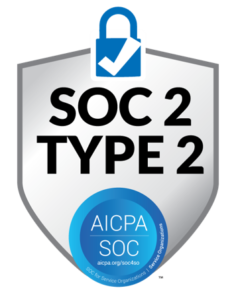Particularly in an era of global uncertainty and volatility, change of any kind is difficult for most people to navigate.
That includes the organizational changes needed to adapt to varying market conditions, enact process improvements, and implement labor management programs that can boost the bottom line.
That’s why TZA’s approach to managing change is designed to prepare, support, and help individuals and teams thrive as they undertake the latest improvement programs. And it’s effective. Studies by change management consultancy Prosci have shown that initiatives using change management best practices were six times as likely to succeed as those without such support. Creating effective internal advocates for change is also critical, boosting the percentage of projects meeting their goals by as much as 73%, Prosci found.
“You have to be exacting in how you define the program to your people to have positive outcomes,” says Andy Paulson, Senior Director of Sales and Marketing at TZA.
Managing Change – Doing so is a 6-step process.
1. Create a Sense of Urgency
One of the keys to successfully implementing innovative programs is creating a sense of ownership among everyone involved. So, step one for effective change management is communicating with employees about why a given project is happening now and how it will help them. “You have to explain the benefits in a very clear way,” Paulson says.
For example, a key motivator can be to present a new program in terms of how it will increase fairness in the workplace. Coaching sessions — during which managers and employees explore where existing processes have room to improve and how upgraded processes can help. As part of that process, getting input from employees on how they see the change and how they feel it might affect them is crucial, according to Paulson.
With these elements in place, employees can become advocates for the change you want to create. Now, they become your champions, and you can use them to distribute your message to the group,” Paulson says. This only happens if you can clearly articulate how the activities you are suggesting impact the issues addressed by the project and why the time to act is now.
2. Create a Change Management Team
Creating champions is also the first step in creating the change management teams necessary for enacting changes throughout the organization. These teams will help change leaders get buy-in at every level, from the shift worker to senior leadership.
Change management teams should include hourly employees, supervisors, and senior leadership. That’s because, as TZA has found, sponsorship correlates with project success. Three out of four initiatives succeed with strong executive sponsorship and a supporting sponsorship coalition. It is important to understand that better sponsorship delivers better results.
When you’re building a team, you’re looking for people with leadership potential on multiple levels,” Paulson says. Team members will then make decisions based on what they see as good for their coworkers. “I’m getting behind this because my man Joe’s there, and I know Joe’s got my back,” Paulson says of the thought process you want to foster in a change management team.
3. Develop a Communication Plan
Navigating change typically follows a process known as the change curve. It is a predictable response to change that can inform how you implement strategies to guide projects through the rough patches.
First comes denial as colleagues take in the details of coming changes. Anger can follow as they resist changes they may see as impossible. With adequate support and direction, however, employees will start to explore the changes with curiosity and more openness. Finally comes acceptance with encouragement from change management teams who are ahead of them in the process.
To help people navigate these stages as easily as possible, effective change management programs have stakeholders interacting consistently and with clear intentions using multiple delivery methods.
4. Communication should embody three core principles –
Intentional communications with core benefits outlined for the people involved, answering the question, “What’s in it for me?”
Communications pitched at the right level for each core benefit, for example, enhanced life-work balance due to reduced workloads and financial gains from incentives for more efficient work.
Multiple forms of communication for each message, including email, FAQ postings, town halls, focus groups, and more.
“You need to repeat yourself a lot to make sure your message gets across,” Paulson advises.
5. Plan for and Create Short-Term Wins
To further help teams through the change curve, leaders can help create short-term wins, building enthusiasm. Short-term wins can be as simple as pizza parties to celebrate milestones reached, and they’re particularly effective at the beginning of the change curve.
“The beginning is where you want to get those wins to start building momentum toward exploring and acceptance,” Paulson says.
As another example of a short-term win, coaching sessions in which current champions prove new processes to managers still at the beginning of the change curve can help create new champions. Confirming that new processes are fair, achievable, and impactful goes a long way toward fostering a new culture that supports your longer-term goals.
According to Paulson, short-term wins should deliver a clear message: “We’re asking more of you, but we’re providing more.”
6. Develop Long-Term Goals
With short-term goals set up and celebrated, it’s time to focus on continuous improvement and longer-term goals. “It’s a journey you’re going on,” Paulson says. In other words, process changes don’t stop with one implementation. “It’s always a phased approach that you’re using to roll one of these programs out,” Paulson says.
For example, a distribution center might start improvements with the picking process since increased efficiencies can quickly stack up significant costs and time savings. From there, improvements can roll out through every phase of the operation.
Through it all, it’s important to keep longer-term goals in mind for individuals as well as the company. Such goals can include greater earnings, more time at home with family, and a safer, fairer workplace.
Anchor the Changes in Corporate Culture
Once a new program is underway and milestones regularly reached, successful organizations work to codify the changes into corporate culture, communicating to new hires and long-time team members in ways big and small: “This is how we do things.”
One example of positive cultural change: getting workers and managers to change their focus from production (I need to pick this number of units) to performance (I need to produce as much as possible given my safety and process guidelines). This drives consistency and reduces performance peaks and valleys that can make throughput unpredictable.
Measurement is key to all change management efforts. Measurement helps motivate change as leaders see where to drive improvements, workers see how their performance can add up to more pay and more time for priorities beyond work, and everyone feels empowered in the workplace. Labor management tools such as TZA ProTrack can help.
Change inevitably comes with challenges, but with best practices in mind, companies, employees, and managers can successfully navigate broader challenges to their business and operations.
Related TZA Resources
TZA Best Practices for Onboarding Your Workforce
TZA Engineered Labor Standards – The Foundation for a High Performance Workforce
REQUEST A DEMO TODAY of the ProTrack Labor Management System System & Services
Call TZA and speak to our Labor Management System team to discuss your challenges. (800) 229-3450.
Reference source *Prosci, The Global Leaders in Change Management Solutions


